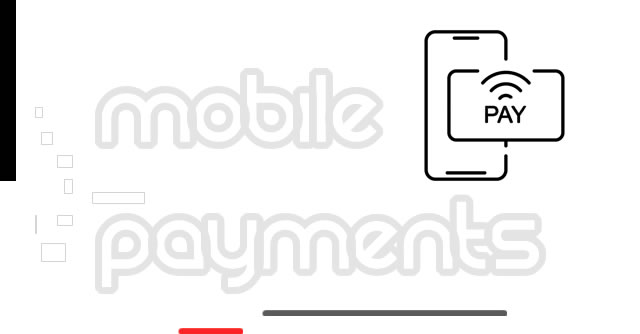The world of money is changing rapidly, and at the forefront of this transformation are mobile payments. These technologies have revolutionized the way we manage and spend money, bringing convenience, speed, and security to financial transactions. What once seemed like a distant possibility is now a reality, as more people use their smartphones to make purchases, transfer funds, and even manage investments. But what exactly are mobile payments? How do they work, and what are the benefits and risks of adopting this technology?
Let's get started
- What Are Mobile Payments?
- How Mobile Payments Work
- Benefits of Mobile Payments
- Risks and Security Concerns
- The Future of Mobile Payments
What Are Mobile Payments?
Mobile payments are a digital way of making financial transactions using a mobile device, such as a smartphone or tablet, as opposed to using cash or credit cards. These payments can be used for online purchases, in-store transactions, or even peer-to-peer transfers. The rise of mobile wallets (such as Apple Pay, Google Wallet, and Samsung Pay) and QR code payments has made it easier than ever to make instant, secure payments from your phone.
There are several types of mobile payments, including:
- Near Field Communication (NFC): This technology allows users to tap their smartphones near a compatible point-of-sale (POS) terminal to make payments.
- QR Code Payments: Users scan a merchant’s unique QR code to complete the transaction via an app or digital wallet.
- Peer-to-Peer (P2P) Payments: Services like Venmo, PayPal, and Cash App enable users to send money directly to others through mobile apps.
How Mobile Payments Work
The technology behind mobile payments involves a combination of cryptography, tokenization, and secure communication protocols to ensure transactions are fast, secure, and efficient. Here's a look at how mobile payments typically work:
-
Mobile Wallet Setup: A user downloads a mobile wallet app and adds their bank account, credit card, or debit card information.
-
Initiating the Payment: To make a payment, the user either taps their phone on an NFC-enabled terminal or scans a QR code. The payment information is transmitted securely to the merchant.
-
Processing the Transaction: The transaction is processed through a secure connection, using tokenization to replace sensitive data (like credit card numbers) with unique identifiers (tokens) that cannot be used again.
-
Confirmation: The payment is confirmed via the mobile wallet, and a receipt is generated electronically, which the user can access via their phone.
InsurTech disruption, AI creativity, AI in finance, mobile payments, cybersecurity threats, IoT in business, IoT security risks, PWAs vs native apps, deep fakes, electric vehicles
Other Posts
- The New Gold Coin for Ghana (GGC): Value, Benefits, and How to Buy
- How to Pay Less Tax in Ghana: Smart Income Tax Planning Strategies for 2025 and beyond
- How to Reduce Your Taxable Income Legally in Canada: 2025 Legal Tax Hacks
- Slash Your IRS Bill: 10 Legal U.S. Tax Reduction Strategies for 2025
- Pension Benefits in Ghana: How to Maximize Your Retirement Contributions
- How to Reduce Your UK Income Tax Bill: 10 Smart Legal Strategies
- Ghana’s 2026 VAT Update: Understand the New Rate and Its Business Impacts
- Gold Soars Above $3,300 as US Chip Export Curbs to China Trigger Market Sell-Off
- US Tightens Chip Export Rules to China: What It Means for Global Chipmakers
- Exchange Rates: How Currencies Gain or Lose Value
- Training for Speed: Expert Tips to Improve Your Sprinting Performance
- SMART Fitness Goals: The Key to Staying Motivated and Reaching Your Fitness Potential
- Fitness Tracking Devices: Do You Really Need a Smartwatch?
- Enhance Your Training with Wearable Fitness Tech: Track, Improve, Achieve
- Why Recovery Matters: Understanding the Role of Rest Days for Fitness Progress
- Fitness Strategies: How to Build Lean Muscle Effectively
- Maximize Your Workout Results: Top Foods to Eat Before and After Exercise
- Real Estate Crowdfunding: A Low-Cost Way to Invest in Real Estate
- Real Estate Investing Strategies: How to Flip Houses & Build Passive Rental Income
- Mobile Payments: The Future of Fast and Secure Transactions
- AI in Finance: How Artificial Intelligence is Revolutionizing Financial Services
- The Future of Insurance: How InsurTech is Disrupting Traditional Models
- Understanding Your Financial Behavior: The Psychology of Money & How to Manage It
- Breaking Free from Debt: Proven Strategies to Achieve Financial Freedom
- The Hidden Dangers of IoT: How to Safeguard Your Connected Devices
- IoT and Agriculture: Feeding the World with Technology
- AI Investing: Best AI Stocks to Improve your portfolio
- AI Creativity : Can Machines Truly Innovate
- IoT For Business Efficiency: Key Benefits and Applications
